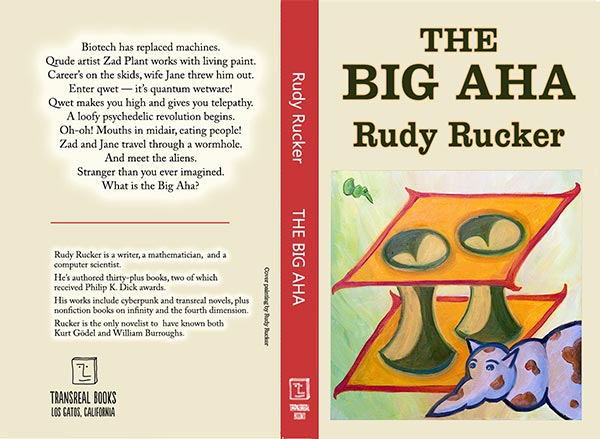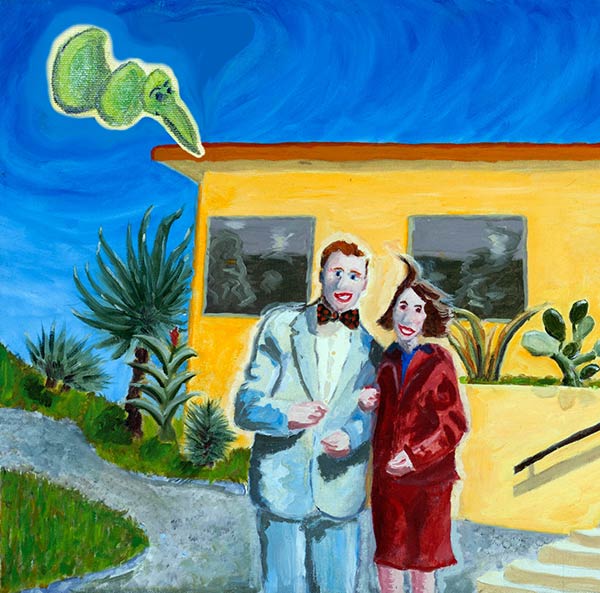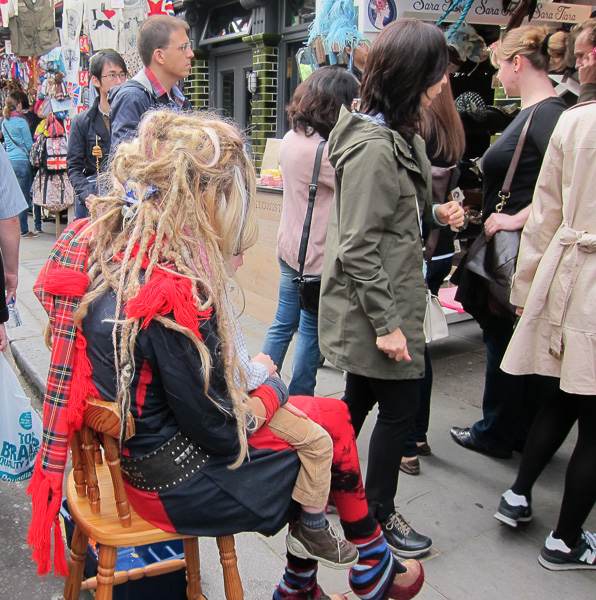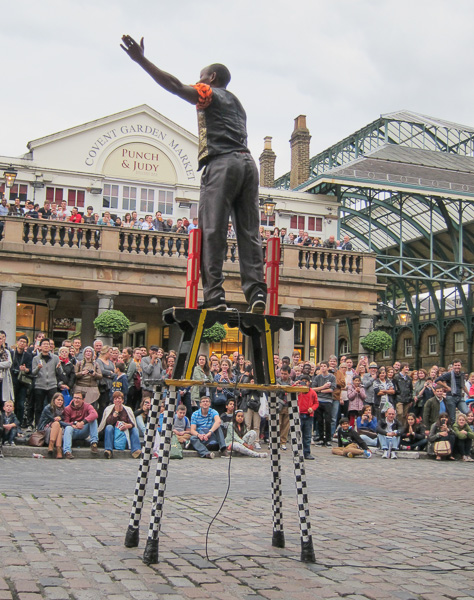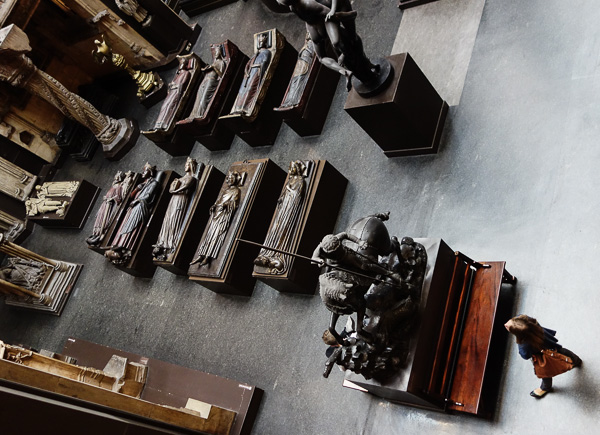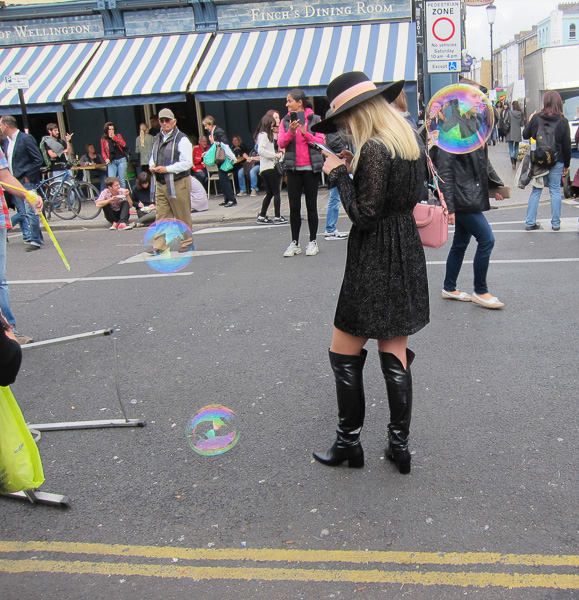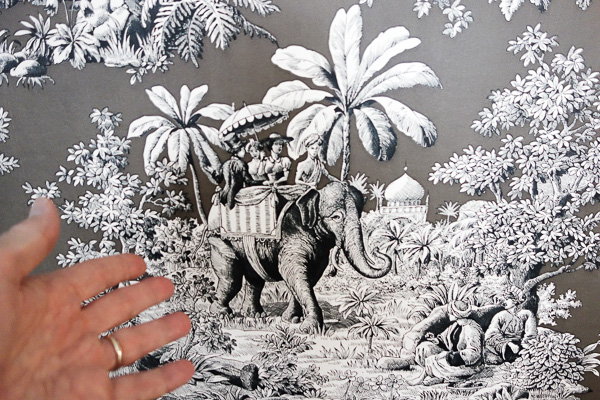The last two or three weeks I’ve been laboring on the files for my novel, The Big Aha, and its equally-sized companion, Notes for The Big Aha. Putting them out in ebook, paperback and (what the heck) hardback, also as free browsable webpages. Soon come. I’m sore from the long hours at my computer.
But let’s return to a more restful time…my recent trip to England with my wife.

Happy at the vast outdoor courtyard within the Victoria and Albert Museum. Old, but not as old as I look in some other photos. Good pink light off those striped red and white stone walls. Great museum cafe behind me. English children splashing in the great fountain pool in this enormous courtyard.

A must-catch bot-shot, taken from a bridge in Green Park, near Buckingham Palace. Enchanted towers.
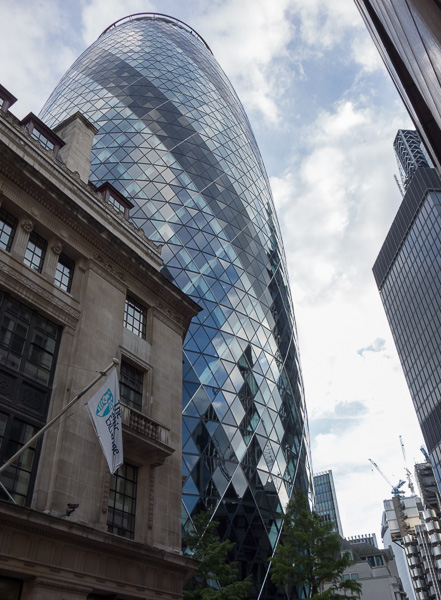
Okay, this was one of my favorite things in London, a very large new building called the Gherkin, set in the financial district, plump and gravid, like a living UFO about to spawn.
I had a nice sandwich at a Pret a Manger near here. Great food chain all over London, I’ve seen them in NYC too. Hunching over my sandwich on its wrapping paper, grunting with pleasure. I come to your world from the Gherkin, yes.
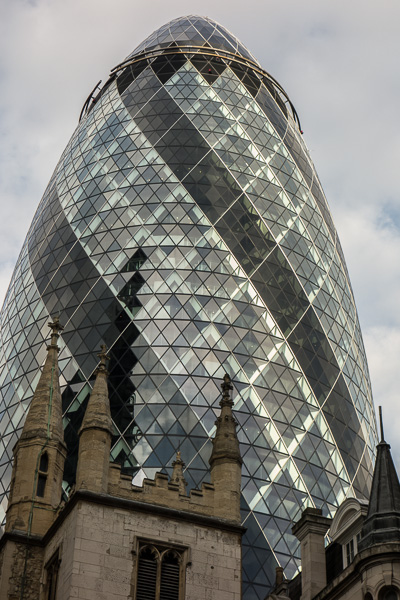
Great contrast of the Gherkin with the old gray stone buildings around it.

On the Tower Bridge, another fab spot. Awesome ye olde metal smithing of the bridge. That’s a new building called the Shard in the background. The new buildings are really taking over, there’s still just a scattering of them, and they still seem interesting and cute. Like when you have two gophers instead of two hundred.

This building is called, I believe, the Walkie Talkie, although I might have called it the Toaster. It’s a lot fatter at the top than at the bottom. Like a cartoon building. Supposedly it’s easier to make odd-shaped structures now that we have computerized blueprints. The reverse of what you might have thought. Computers free us to design odder-looking and less-boring shapes.

In London, maybe because I wasn’t a native, the crazy people seemed cuter than in the US. This man in front of the old Tate museum is doing a Scottish jig while carrying signs relating to the Bible and to global politics. Seems more like an eccentric than a dangerous psycho like back home.
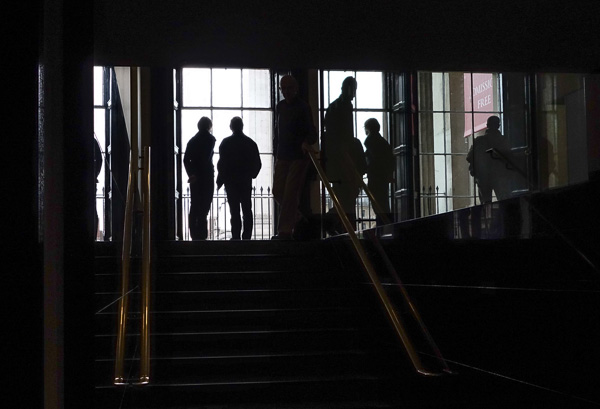
I like these silhouettes in the National Museum. We visited a Peter Bruegel painting there, The Adoration of the Kings. I first saw that painting in London around 1995, it was when I decided to write my As Above, So Below novel about Bruegel’s life.
A note I made in my Journals after that first visit: “The gallery note by the picture says that Bruegel put soldier in his pictures because for most of his life the Netherlands were occupied by Spanish soldiers. This touch makes it seem so real. Makes me want to write Bruegel’s life. The rainy Flemish day.”
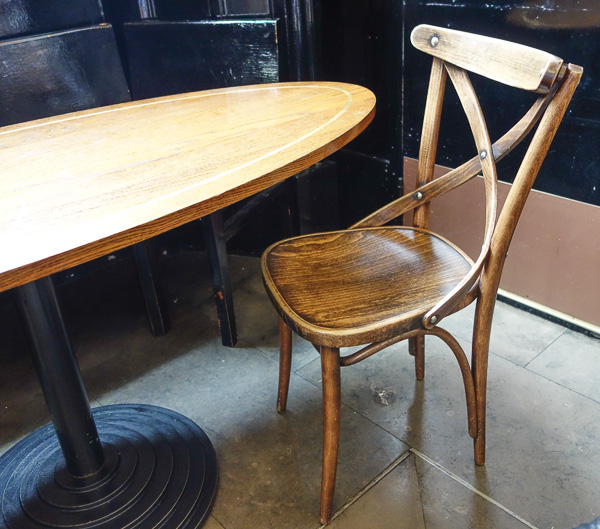
Love the curves of the chair and the table. Someone taking the trouble to design and build these things, someone taking the trouble to put them in a cafe. Civilized.
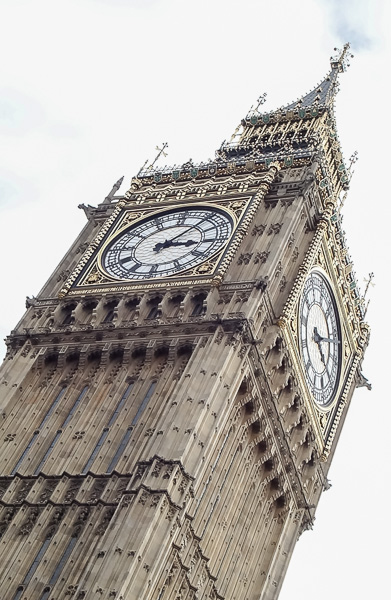
Gotta get your shot of Big Ben. All that detail. It appears over and over in movies, setting a time in the viewers’ minds.

Happy in the National Museum cafe, photo shot with Sylvia’s phone.

So now we’re in Oxford, walking around town. Lots of parts are fenced or walled off, these are the “colleges.” Hard to quite understand how it works, all these separate colleges, each with dorms, dining hall, teachers, and student body. Parts of a university.
I was here in 1976 for a math conference, a Logic Colloquium, I wrote about it in my autobio Nested Scrolls. I talked on “The One/Many Problem in the Foundations of Set Theory.”

This is the Sheldonian Theatre, used for university ceremonies and for little concerts. We saw an awesome string quartet playing Vivaldi’s “Four Seasons” interleaved with an Argentinean composer’s semi-joking “Four Seasons” pieces written in riposte to Vivaldi, so eight pieces in all, SO frikkin’ civilized.
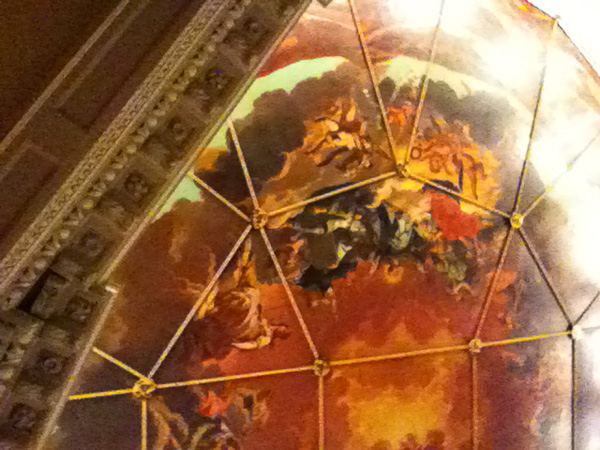
Looking up at the Sheldonian ceiling during the string quartet, I saw this (just a cell phone snap). The place was designed by Christopher Wren, architect of the famed St. Paul’s cathedral of London. I had some fun looking at the odd polygonal shapes on the ceiling of the Sheldonian, speculating about how Wren put them together, and about how one would go about constructing this pattern in some convincingly unique way. Visualizing a short article in Mathematics Magazine about this, but not quite getting the key insight.

This is Christ Church college where my man Lewis Carroll, a.k.a. Charles Lutwidge Dodgson, spent most of his life. He went to the college, then stayed on, teaching mathematics. His Alice came out in 1865, when he was 33. On its grounds, Christ Church has a very large meadow that runs down to the Thames on one side and the Cherwell on the other, both rivers rather narrow here. You can walk slowly around the meadow in an hour and I did this with great joy, thinking about Carroll being here, and imagining his creatures among the cows.

Here’s the meadow…surely Lewis Carroll often enjoyed this view. Symbolic to see the stump, the fallen tree, the missing Lewis Carroll. I sat on it for awhile drawing sketches of Wonderland creatures in the field.
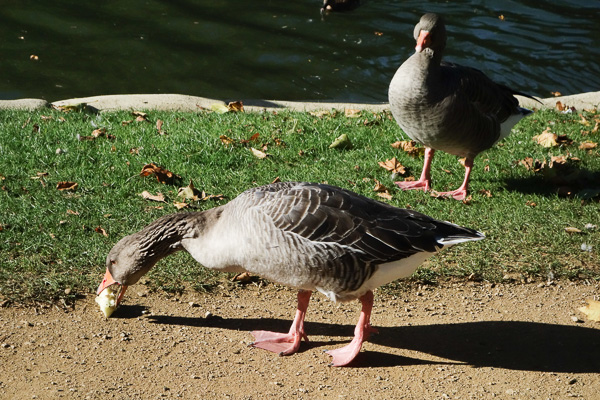
Greedy goose eating an apple core I gave her after I (greedy too) at the apple. This is by the Thames by that Christ Church meadow where Lewis Carroll used to hang.
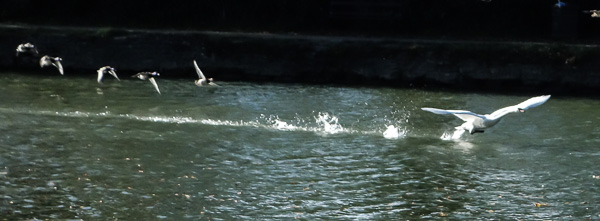
Birds landing and taking off in the Thames.
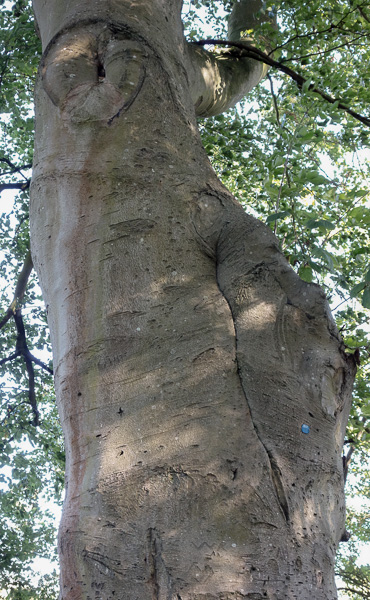
Walking around Lewis C.’s meadow I was alert to transformations in the plants an animals. Here’s a tree with a pfumpf-pfumpf face. Dowager Dough tree.
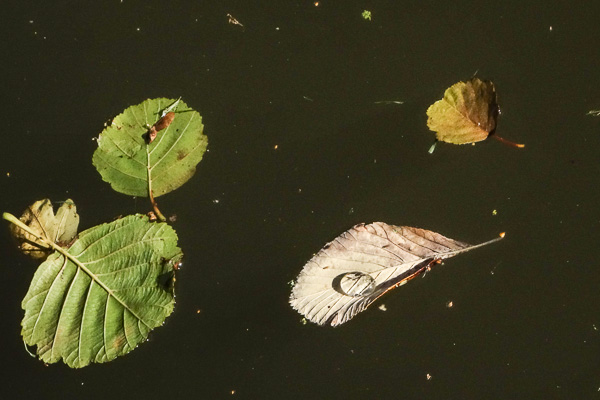
Sitting by the Cherwell for a peaceful half hour there, I’m looking at the leaves on the passing stream, thinking of them like planets in the galaxy, and that one drop of water on the one leaf is a tarn, a sea, home to thousands of microbes, like us lifing on our Earth, drifting amid cosmic debris.
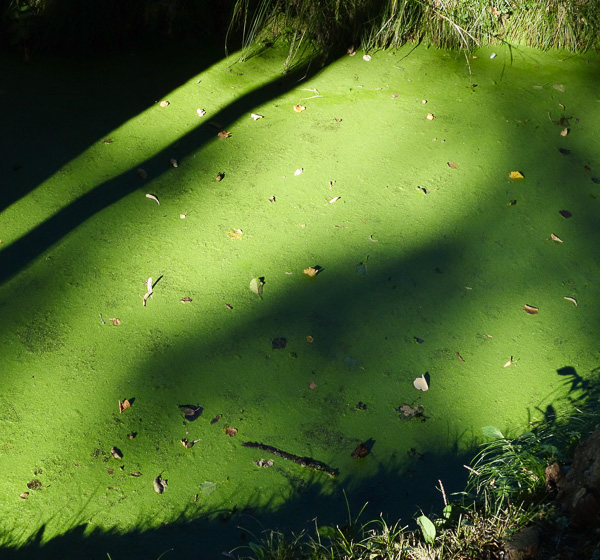
A side-arm of the Cherwell, not flowing, overgrown with duckweed, marvelous name for a plant. Carroll had a friend called Duckworth, he was a master of classics and published, I seem to recall, a book on Vergil’s Aeneid, which I read with my class read in Latin IV in high-school.
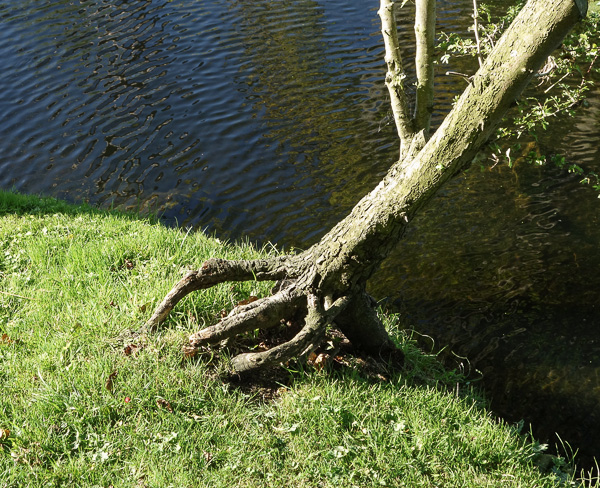
Another Carroll creature near the Christ Church meadow. Weirdly animate, this tree, no? Claw, living fork.
Leaving the meadow, I see a bum by the stream, with shopping bags, the ducks edge up to him, he alternately feeds them and shoos them away.
A trim woman jogs past. Bum holds out his thumb as if to hitch a ride, guffaws. She smiles and runs on.
I walk on a bit further, then pause on a tiny hillock by the stream to admire the longhorn cattle in the meadow, behind them are the dreaming spires of Christ Church College and all Oxford.
“Oxford” means a placve wehre they herded cattle across the Thames, which is called the Isis River here as well.

Still more semi-animate plant/animals in the Oxford botanical garden next to Christ Church. This teeth like a Milne heffalump, with great walrus teeth.
And now the bum approached me. Naturally he was Lewis Carroll. Naturally he led me though a series of melting stone walls. to a secret tower room—his ghostly lodgings for, lo, these 200 years.
Naturally he produced a tiny, battered teapot of his own design, and poured out a dram of that magic elixir which has brought me to this “Wonderland” from which I send this very last message to my old workaday world…
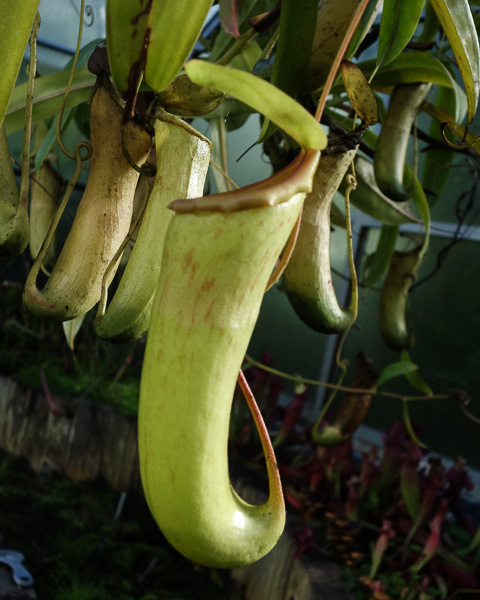
And here are the mean, mocking flowers from Through the Looking Glass. Carnivorous plants, by the way.
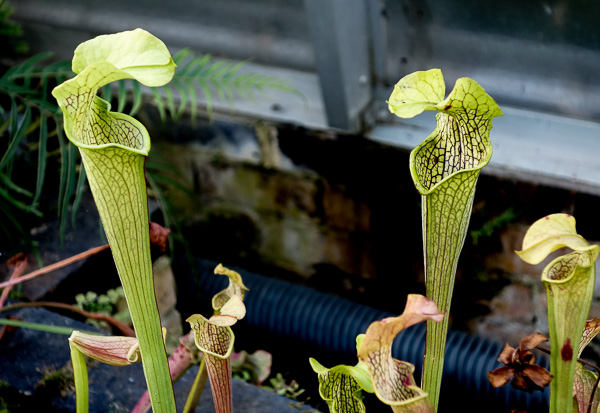
A few more of them, plotting against Alice.
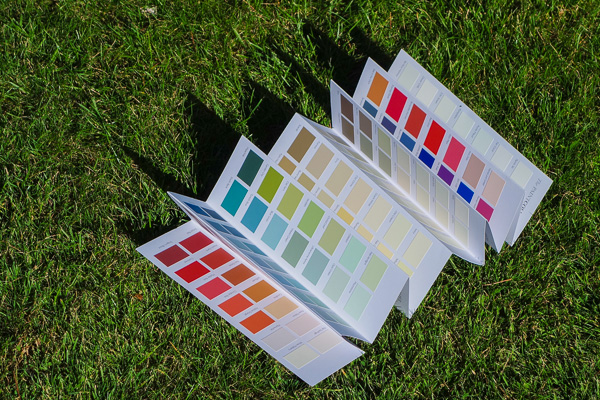
A pamphlet of paint chips on the lawn. A group of passing tourist youths gawks at me taking this picture. Are they missing something?

In the streets. Just love those dreaming spires of Oxford. So frikkin’ quaint. Would be nice to live here for a couple of years, somehow connected with the university. Going to seminars. Craving something academic, I went into the great bookstore, Blackwell’s, right by the entrance to the campus, and picked up a wonderful book on vector calculus called Div, Grad, Curl And All That. I’d read it before, when teaching a course on this stuff, but now I reread it passionately, getting hyped on a studious frame of mind, reviewing the fact that Maxwell’s equations for electromagnetism are couched in the language of vector calculus with it’s div, grad, curl and all that. Reading it in the coffee shops, in the room.
I couldn’t do some of the problems in the book, and when I got home, I managed to get a solution manual from the publisher. But haven’t gotten back into the frame of mind to read through them. Not on vacation anymore, back here at home.

A British churchyard, in a Cotswold village not far from Oxford. Old as I am, I don’t like graveyards very much anymore. They used to seem quaint and thought-provoking, but now they seem creepy. Bony Death is getting too damned close to my heels.
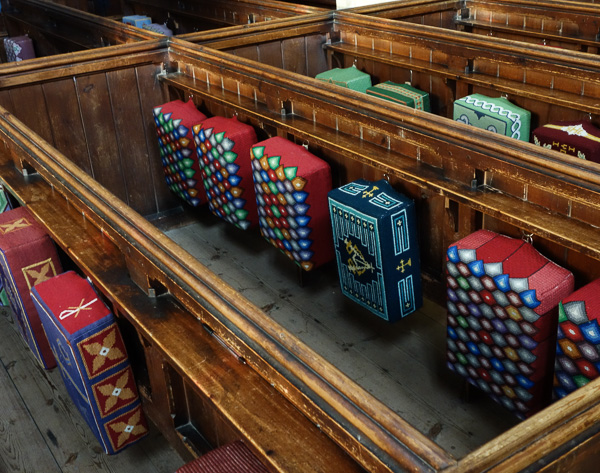
The wee kirk with kneeler pads crocheted by the ladies of the congregation. British much?
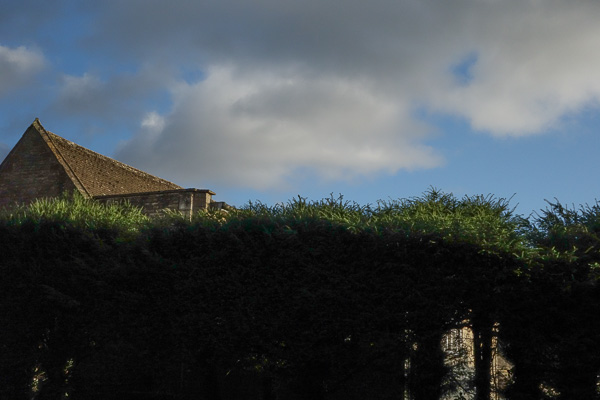
Fab clouds in the Cotswolds, with rain coming on. I would have liked to wander down the lanes and paths here for days, but somehow didn’t manage that. You do what you can on a trip, bouncing around, working with what you’re able to make happen, working with what does happen.

This is one of my favorite snaps from the trip. The clouds echoing off the roof line.

The White Hart hotel in Stow on Wold. Gotta get back here sometime. We were in the area visiting Sylvia’s childhood friend Andrea, who’s a landscape artist. Great to be in her home. She drove us over to check out Stow on Wold. An SF reader thinks of Arthur C. Clarke’s jovial stories, Tales From the White Hart.
Let’s roll back to some more shots from London.
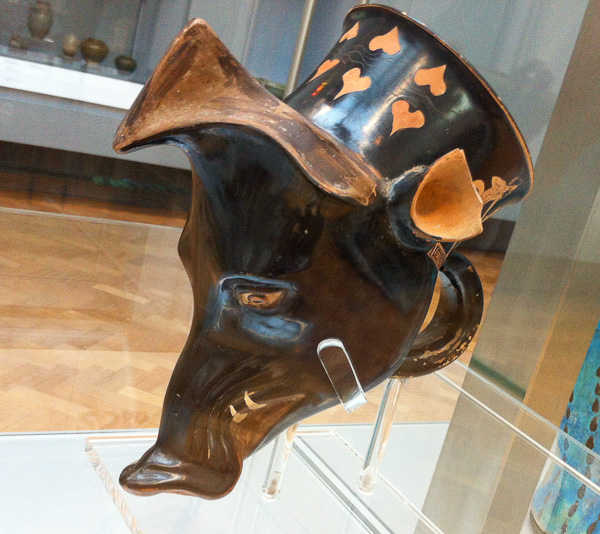
Love this Greek boar-head mug in the Victoria & Albert museum. Thousands of years old. People have been so clever for so long. So many of us making things.
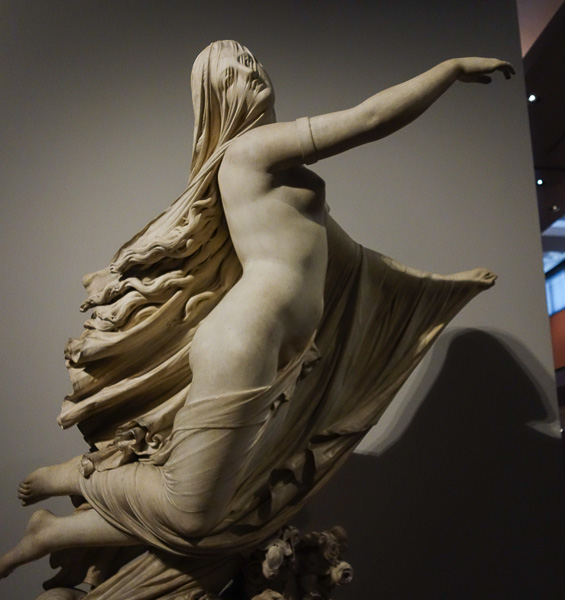
Love this type of sculpture. The lovely woman. The neoclassical rococo schmeer. The elegant handling of the transparent stone drapery across her face…I forget her name, was it Truth? Liberty? The Dream Of Freedom?
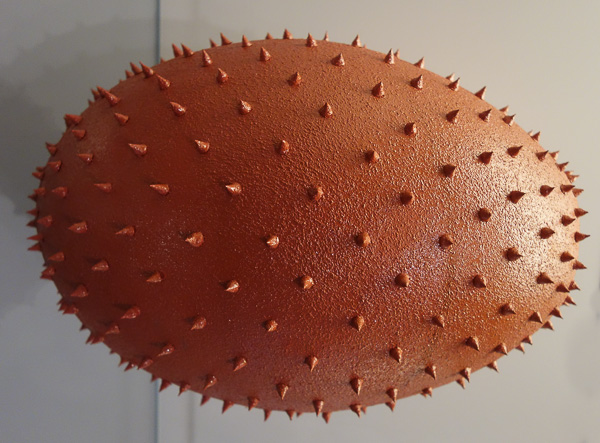
Love this kind of sculpture too. It’s glass art, I think, in the V & A, a spiky red egg about a foot long. Mounted vertically, standing on one end, but I turned the picture sideways. More dynamic this way, more like a UFO. A door opens in the tip of each spike and out step 279 ants from Mars. “Can we interest you in some real estate? We’re offering very nice homesteading tracts in Nix Crater, with extremely pliant settlement terms.”
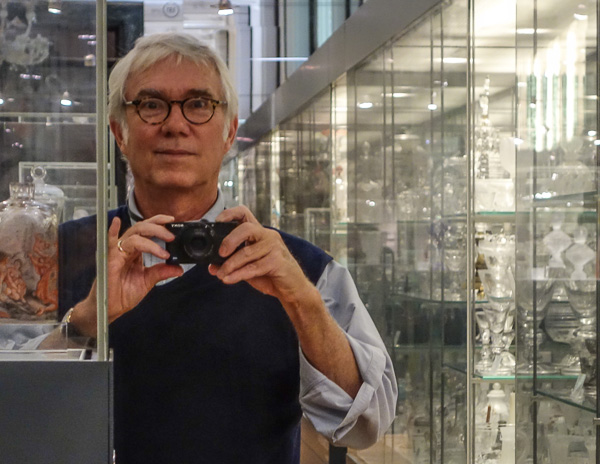
In the art glass gallery some more. Losing myself in the reflections and refractions. You can see on the of ants from mars on my shirt collar, twittering into my ear.
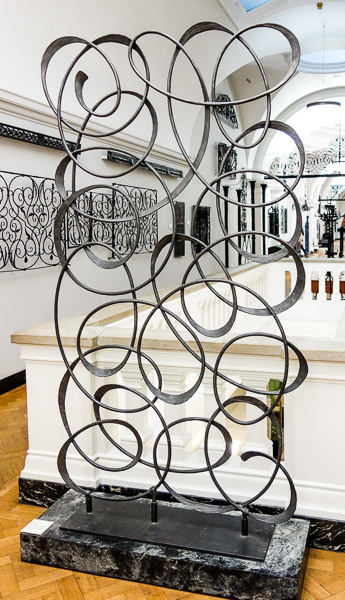
Love the free-sweeping wrought-iron loops. Like shapes you make with an oldtime sparkler or a newtime glo-stick. The work by a guy in Villingen, Germany. I went to a boarding school for a year near there, in a town called Königsfeld, where all the grown-ups called each other BrÅ©der and Schwester. Brother and Sister.

Dig the old master with the Hell’s Angel goatee. The ubiquity of art.
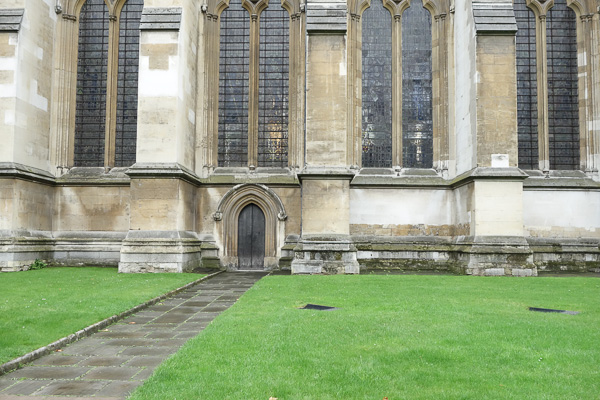
Outside Westminster Abbey. That insanely green English grass. The abbey like a stone fractal, detail upon detail within.
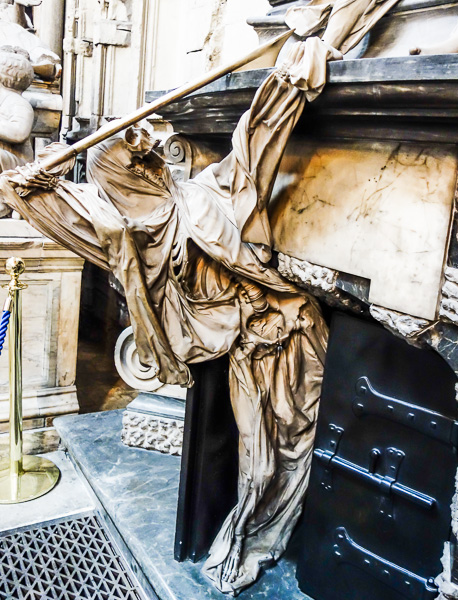
Nice statue of Death here, he’s poking at someone with a spear. The opposite of St. George and the dragon. Can’t make out Death’s profile too well here…he just has his upper teeth and his lower jaw is gone. Dig the ribcage showing through is cloak, and his bony foot. Taking Death really personally and immediately, these oldtime artists.
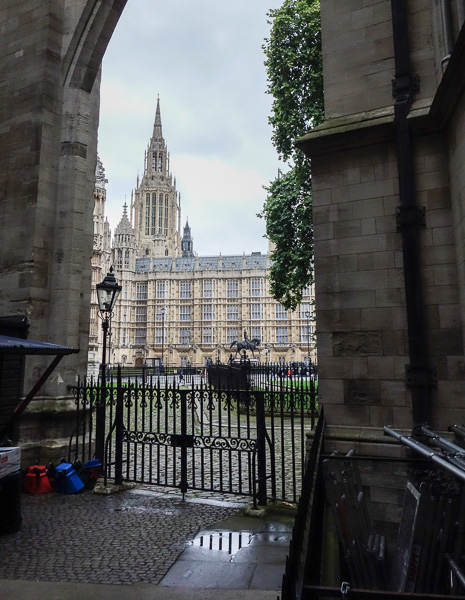
Doing the postcard thing. I guess that’s the House of Parliament, seen out the side door of Westminster Abbey. Complete with English puddle.

The food market inside the fabled up-market Harrods department store. Seemed like largely foreigners shopping in here…tourists or rich people from the Middle East. Beyond luxury.
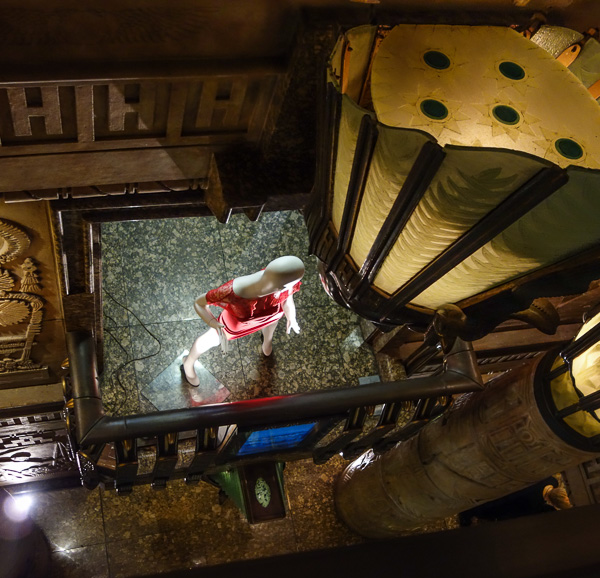
Arty mannequins posed by the escalators in Harrods. The walls decorated in an Egyptian theme. I saw a guy buying a $10K Hasselblad camera “for a friend” like he was buying a handkerchief. Not really a camera nut, not asking questions, just like, “I suppose this is a good one. Or should I get the Leica?” The whole place kind of nauseating after awhile.
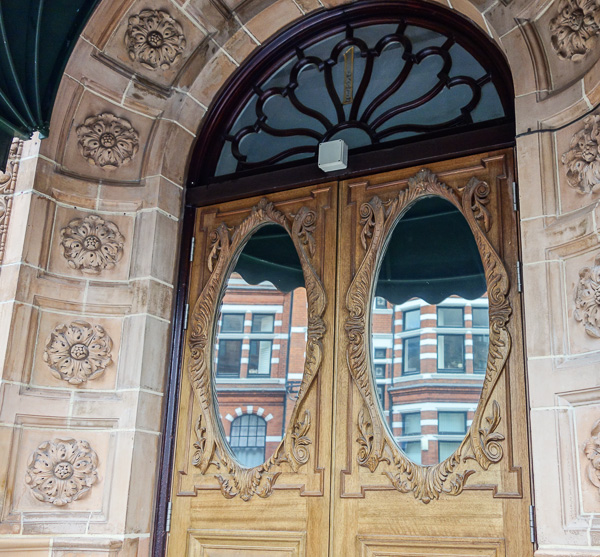
Art Nouveau door on Harrods. Like the red and white striped stone building in the reflection, lots of buildings like that around London.
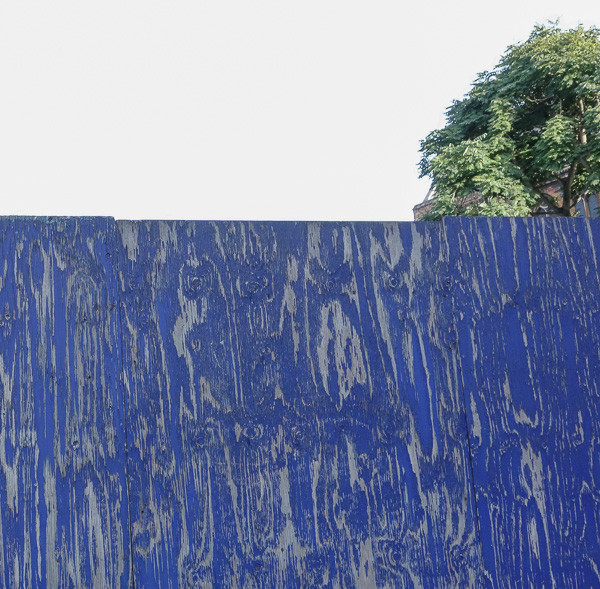
Nice blue-painted plywood wall closing off a yard or something. The paint worn in a nice way. I like how natural patterns don’t repeat.

Walking through an alleyway in London Chinatown, not far from Covent Garden. Nice to get off the crowded sidewalks into an alley.

Steam venting in the Chinatown alley. The buildings all solid and brick.

Sunset from our room in South Kensington. That whole chimney-pots thing. Mackerel sky. Golden, changing every second. Like I always say, if it were for some reason difficult to see clouds, what a fetish of them we’d make. But how little I remember to stare at them. The world going all out, every moment of every day. Taking a trip helps me wake up.
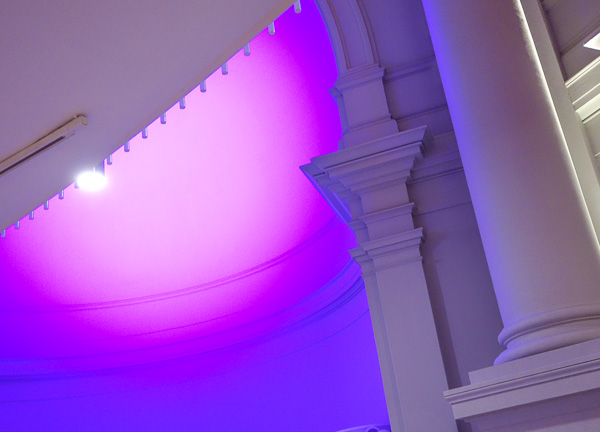
Lavender, mauve, purple, violet, I’m never quite sure about that zone of color names. Nice against the classic pillar.
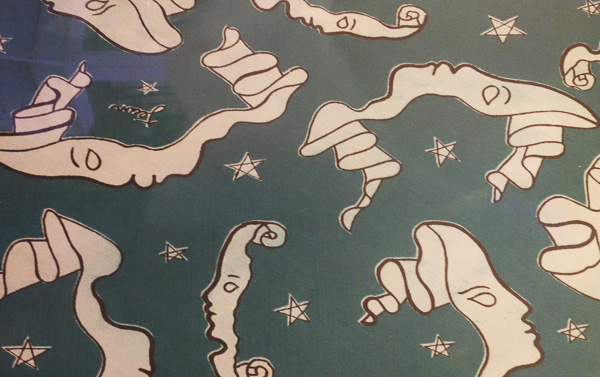
From the design section of the V&A museum, a 1920s fabric with faces as sheets of paper. A witty way to represent writers putting themselves forward.
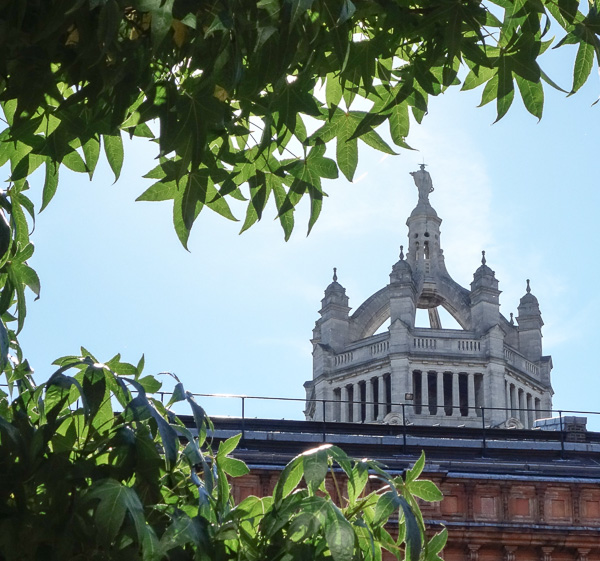
Photo like this is pretty much a no-brainer. A bot could catch it. Spire with leaves. St. George and the Dragon.
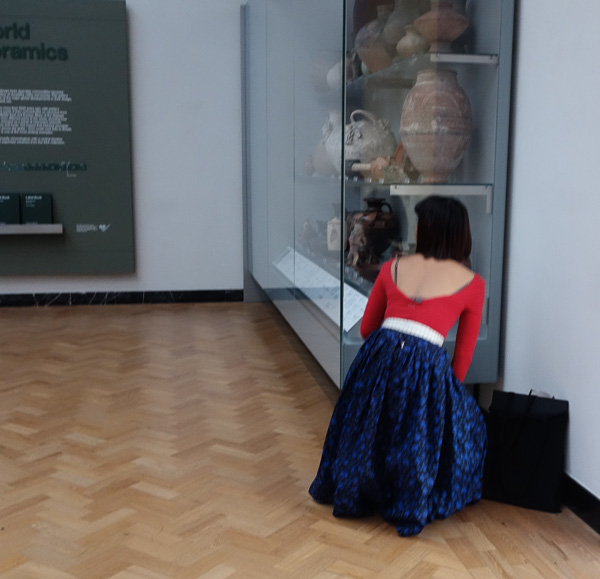
Meanwhile a lone human figure ceaselessly rummages in the mazes of the Victoria and Albert Museum. Lost in Borges’ Library of Babel.
